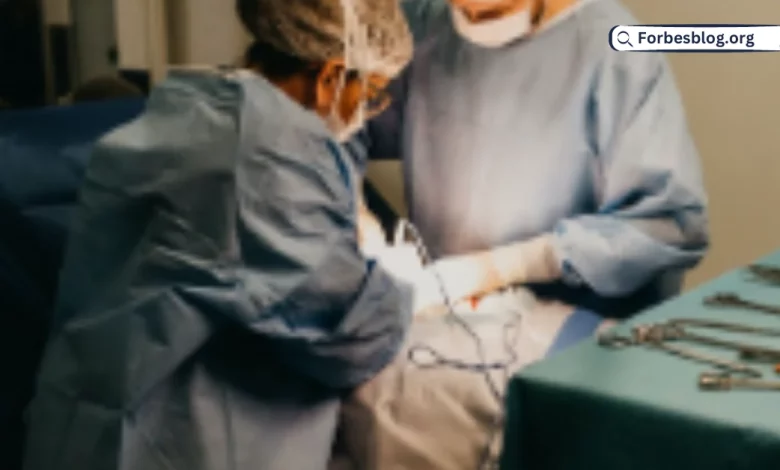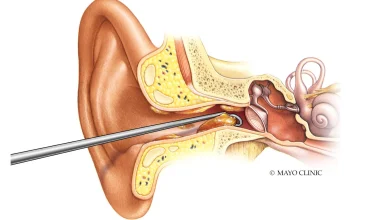What Are The Different Types of Spinal Surgery?

The spine is one of the most vital structures in the body. So, if a part of the spine becomes damaged, it can have significant consequences.
Many people experience spinal conditions or injuries at some point in life. Spinal problems that aren’t improved after months of non-invasive treatment may require surgery.
There are several different types of spinal surgery to address different patients’ needs. These procedures include:
Table of Contents
Decompression Surgery
Spinal decompression is performed to eliminate pressure on the spinal cord and spinal nerves. The type of spinal surgery can relieve symptoms of spinal stenosis, spondylolisthesis, a slipped disc, degenerative disc disease, scoliosis, and spinal fracture.
There are several different procedures that fall under the category of spinal decompression, including:
Laminectomy
Laminectomy is a surgical procedure in which the lamina is removed. As a portion of bone that covers and protects the back of the spinal cord, the lamina can hinder the treatment of nerve compression in the spinal canal. By removing it, your surgeon can alleviate pressure on the spinal nerves.
Lumbar laminectomy is the most common form of this procedure, but it may also be performed on the cervical or thoracic spine.
Laminotomy
Laminotomy also involves the lamina. However, while laminectomy involves removing the entire lamina of the affected vertebra, only a small part of the lamina is removed in laminotomy.
Surgeons generally use laminotomy to create more space on either the left or right side of the spinal canal. As a result, most of the lamina is left unaffected.
Discectomy
Discectomy involves removing the damaged piece of an intevertebral disc. Usually, discectomy is performed as slipped disc surgery. In removing a portion of the injured disc, this procedure can alleviate the strain on nearby nerves.
Foraminotomy
Foraminotomy is performed to create additional space where a spinal nerve root extends out of the spinal canal. This procedure may involve removing tissue, including bone, to alleviate nerve compression. Foraminotomy is mainly done to treat spinal stenosis.
Corpectomy
Corpectomy is a type of spinal surgery that involves removing damaged vertebrae and spinal discs. In this procedure, the section of bone surrounding the spinal cord is left alone. The result of corpectomy is relief from nerve compression, which can occur with spinal stenosis, fractures, deformities, and tumors.
Spinal Fusion
Spinal fusion can be achieved through a few different procedures. These procedures are forms of interbody fusion and include:
PLIF
PLIF (posterior lumbar interbody fusion) is the conventional method of interbody fusion. With this technique, the surgeon accesses the spine through an incision in the middle of the back. Then, the muscles must be pulled aside to uncover the vertebrae.
After achieving access to the vertebrae, the surgeon will perform laminectomy. Removing the lamina alleviates pressure on the nerve roots. The surgeon can then get rid of damaged disc tissue, along with any bone tissue that’s causing nerve compression.
After clearing out the disc space, the surgeon can place bone graft material between the vertebrae to stimulate spinal fusion. Screws, rods, and/or plates may be used to facilitate the fusion.
ALIF
ALIF is short for anterior lumbar interbody fusion. With this method, the surgeon accesses the spine from the front instead of the back.
Using an anterior approach, the surgeon will make an incision in the abdomen. Large blood vessels and intestines must be temporarily moved to the side so that the surgeon can access the spine to perform decompression and/or fusion.
Since ALIF doesn’t require the disruption of spinal nerves and the major muscles in the back, it has a lower risk of complications and injury when compared to PLIF.
TLIF
TLIF, or transforaminal lumbar interbody fusion, is a less conventional approach to spinal fusion. In this procedure, the surgeon gains access to the lumbar spine by way of the intervertebral foramen using a posterior incision. The intervertebral foramen is the opening in between the vertebrae.
By utilizing the spine’s natural passageway, TLIF makes it possible to perform fusion on both the front and back of the spine in a single procedure. As a result, the surgery is less invasive, causes less scarring, and comes with a lower risk of complications.
XLIF
XLIF is an acronym for extreme lateral interbody fusion. It’s a minimally-invasive procedure that involves accessing the spine through a small incision in the side of the body. Before the procedure begins, the surgeon will take x-rays with the patient on their side to find the exact location of the spinal disc.
With XLIF, the surgeon can entirely avoid the major back muscles and the large blood vessels located in front of the spine. This allows for less pain, blood loss, time at the hospital, and recovery time. With XLIF, many patients can even walk on the same day as the procedure.
Spinal Fusion Alternatives
Unfortunately, spinal fusion comes with multiple notable downsides. Along with a recovery period that can last for upwards of a year, spinal fusion can limit or even eliminate patients’ ability to bend and twist the spine. Additionally, many spinal fusion patients must remain in the hospital for 3 to 4 days after the procedure.
Patients who are struggling with chronic spinal pain, haven’t had success with non-invasive treatments, but are wary of the extended recovery, reduced mobility, and complications of spinal fusion can consider fusion alternatives.
Spinal implants are widely used as spinal fusion alternatives. Implants like the Premia Spine TOPS System stabilize the spine without compromising its range of motion. To reduce your back surgery recovery time, spine devices like the TOPS System are an ideal option.
With spinal fusion alternatives, patients can:
- Retain a normal range of motion in the spine
- Potentially return home on the same day as the procedure
- Return to their normal activities soon after surgery
Wrapping Up
With a broad range of spinal surgeries performed today, it’s essential to talk to your doctor about the right treatment for your needs. In many cases, spinal conditions can even be successfully managed without the need for surgery.
Also Read: ysl black opium dossier.co
Also Read: Blooket




